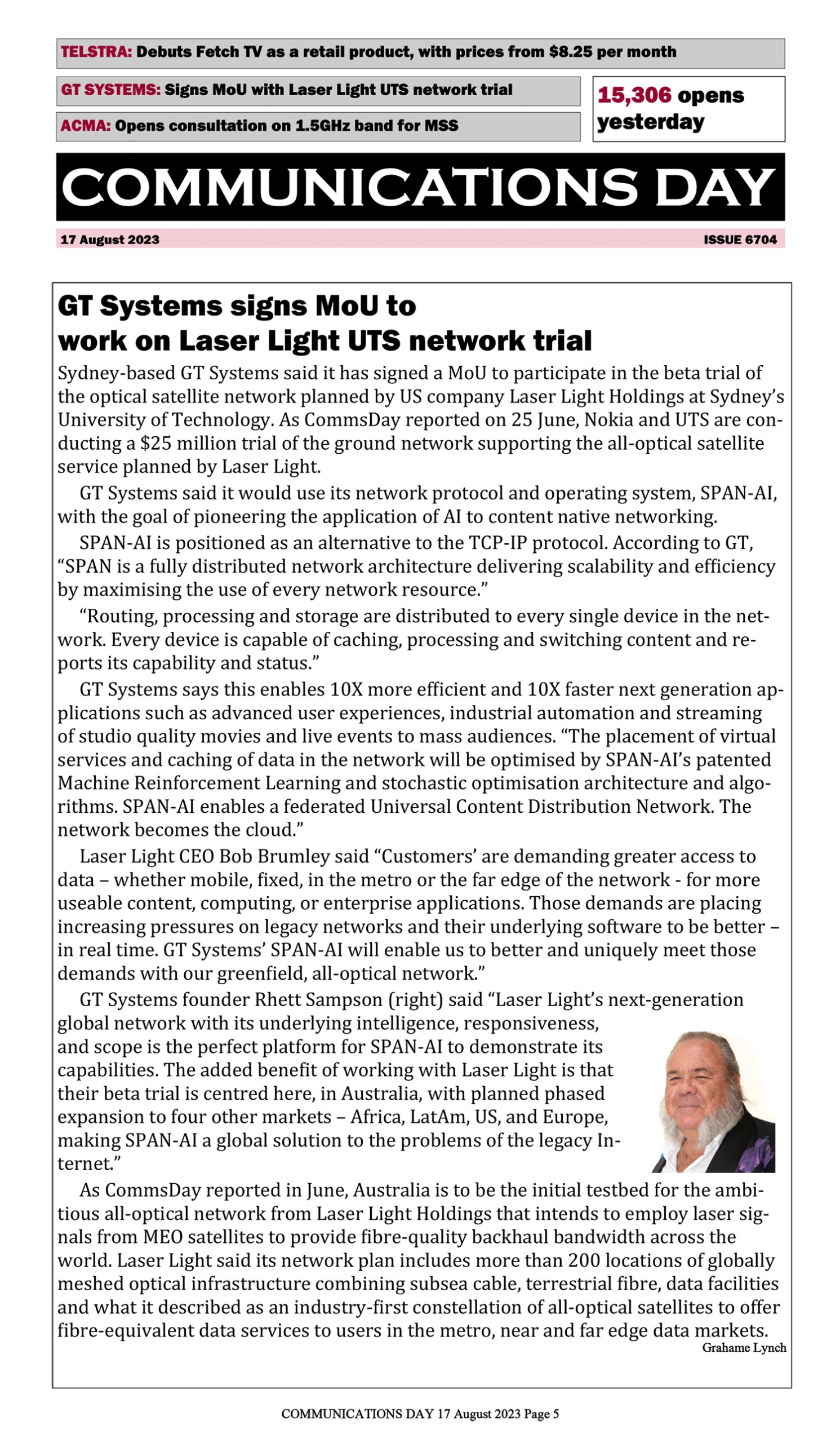
GT Systems signs MoU to work on Laser Light UTS network trial
© Communications Day. Reprinted with permission.
17 August 2023 | ISSUE 6704
Sydney-based GT Systems said it has signed a MoU to participate in the beta trial of the optical satellite network planned by US company Laser Light Holdings at Sydney’s University of Technology. As CommsDay reported on 25 June, Nokia and UTS are con- ducting a $25 million trial of the ground network supporting the all-optical satellite service planned by Laser Light.
GT Systems said it would use its network protocol and operating system, SPAN-AI, with the goal of pioneering the application of AI to content native networking.
SPAN-AI is positioned as an alternative to the TCP-IP protocol. According to GT, “SPAN is a fully distributed network architecture delivering scalability and efficiency by maximising the use of every network resource.”
“Routing, processing and storage are distributed to every single device in the net- work. Every device is capable of caching, processing and switching content and re- ports its capability and status.”
GT Systems says this enables 10X more efficient and 10X faster next generation applications such as advanced user experiences, industrial automation and streaming of studio quality movies and live events to mass audiences. “The placement of virtual services and caching of data in the network will be optimised by SPAN-AI’s patented Machine Reinforcement Learning and stochastic optimisation architecture and algorithms. SPAN-AI enables a federated Universal Content Distribution Network. The network becomes the cloud.”
Laser Light CEO Bob Brumley said “Customers’ are demanding greater access to data – whether mobile, fixed, in the metro or the far edge of the network – for more useable content, computing, or enterprise applications. Those demands are placing increasing pressures on legacy networks and their underlying software to be better – in real time. GT Systems’ SPAN-AI will enable us to better and uniquely meet those demands with our greenfield, all-optical network.”
GT Systems founder Rhett Sampson (right) said “Laser Light’s next-generation global network with its underlying intelligence, responsiveness, and scope is the perfect platform for SPAN-AI to demonstrate its capabilities. The added benefit of working with Laser Light is that their beta trial is centred here, in Australia, with planned phased expansion to four other markets – Africa, LatAm, US, and Europe, making SPAN-AI a global solution to the problems of the legacy Internet.”
As CommsDay reported in June, Australia is to be the initial testbed for the ambitious all-optical network from Laser Light Holdings that intends to employ laser signals from MEO satellites to provide fibre-quality backhaul bandwidth across the world. Laser Light said its network plan includes more than 200 locations of globally meshed optical infrastructure combining subsea cable, terrestrial fibre, data facilities and what it described as an industry-first constellation of all-optical satellites to offer fibre-equivalent data services to users in the metro, near and far edge data markets.
Grahame Lynch